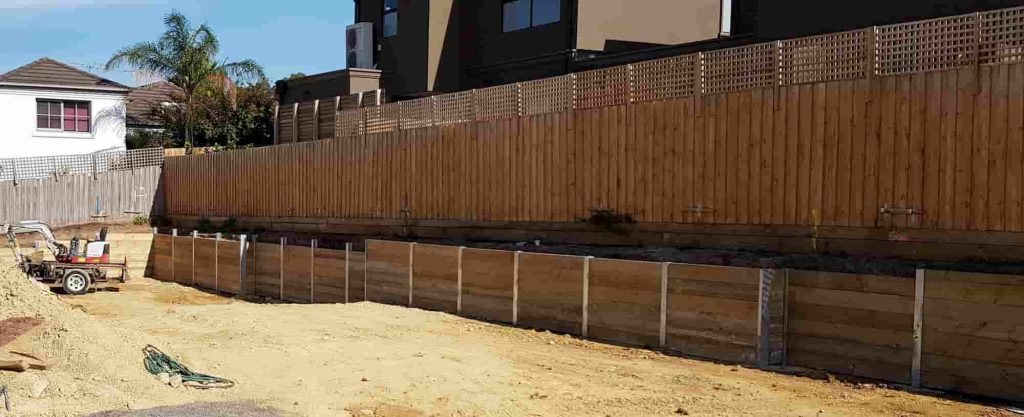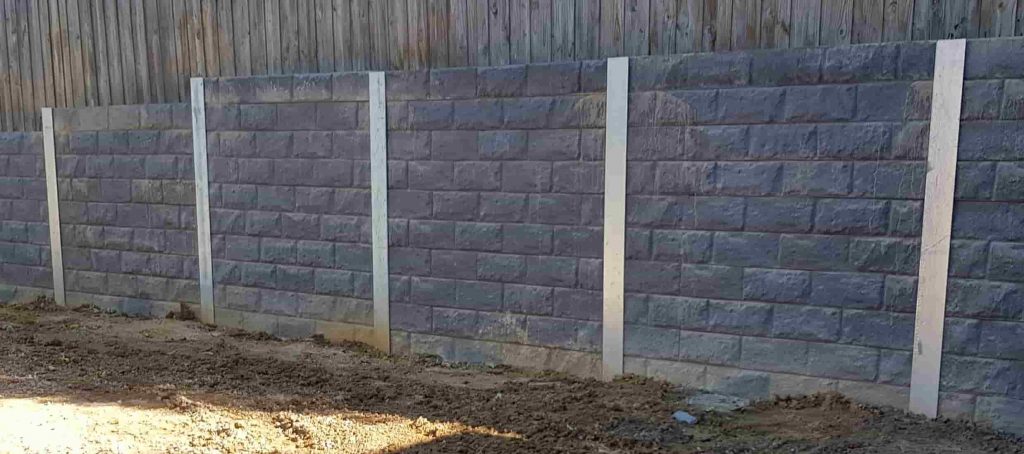Introduction
When it pertains to landscaping and building and construction, among the most critical elements to consider is the type of soil on your property. Understanding soil types with your retaining wall installer's help can make a substantial distinction in guaranteeing the stability and durability of your retaining wall. Keeping walls serve not only as aesthetic enhancements however likewise play a crucial role in managing soil erosion and offering support in sloped areas. This guide will dive deep into the intricacies of soil types, their characteristics, and how they engage with various products like timber sleepers, concrete sleepers, and H beams
Understanding Soil Types with Your Retaining Wall Installer's Help
What Are Soil Types?
Soil types are categorized based upon their physical and chemical properties. They can be broadly categorized into sandy, clayey, silty, loamy, and peaty soils. Each type has its own distinct qualities that impact drain, compaction, and total stability.
Why Is Soil Type Important for Maintaining Walls?
The type of soil directly impacts the design and setup of maintaining walls:
- Drainage: Some soils keep water while others allow it to drain pipes quickly. Weight: Different soil types have varying weights that can put in pressures on the maintaining wall. Erosion: The vulnerability to erosion varies with each soil type.
Common Soil Types Explained
Sandy Soil
Sandy soil consists of big particles that develop large spaces between them. It drains pipes rapidly however might not hold nutrients well.
Pros:
- Excellent drainage Easy to work with
Cons:
- Low nutrient retention Susceptible to erosion
Clayey Soil
Clayey soil consists of really great particles that are firmly packed together. It keeps water but drains pipes poorly.
Pros:
- High nutrient retention Good for specific plant growth
Cons:
- Poor drainage Can expand or diminish dramatically with wetness changes
Silty Soil
Silty soil is comprised of medium-sized particles that are smooth to the touch. It holds moisture much better than sandy soil but drains poorly.

Pros:
- Good nutrient retention Holds moisture well
Cons:
- Compacts easily Susceptible to disintegration when wet
Loamy Soil
Loamy soil is a mixture of sand, silt, and clay. It is typically thought about the perfect garden soil due to its balance of drain and nutrient retention.
Pros:
- Excellent drainage Nutrient-rich
Cons:
- Can be costly if bought
Peaty Soil
Peaty soil consists of a great deal of organic matter, making it dark in color. It's generally found in wet areas.
Pros:
- Rich in nutrients Great for specific plants
Cons:
- Poor drainage Can be acidic
Choosing the Right Product for Your Maintaining Wall
Timber Sleepers vs. Concrete Sleepers
When structure a retaining wall, you have a number of product alternatives https://tuffstuffretainingwalls.com.au/ - timber sleepers or concrete sleepers Each has its advantages depending upon your particular needs.
Timber Sleepers
Timber sleepers provide a natural look that mixes well with gardens.
Advantages:
Aesthetic appeal. Easier to manage during installation. Cost-effective option.Disadvantages:
Prone to rot over time. May require more maintenance.
Concrete Sleepers
Concrete sleepers provide sturdiness and strength for bigger walls or walls developed on unsteady soil conditions.
Advantages:
Long-lasting. Requires less maintenance. Suitable for numerous designs.Disadvantages:
More expensive than timber. Heavier, needing more labor during installation.H Beams as Structural Support
For vertical loads or extra structural support in your retaining wall system, using H beams can be beneficial.
Benefits of H Beams:
Provide additional strength against lateral earth pressure. Ideal for high slopes where extra reinforcement is necessary. Versatile usage in conjunction with both timber or concrete systems.Soil Analysis Before Installation
Why Conduct a Soil Test?
Conducting a soil test before installing your retaining wall is important since it assists recognize:
Soil structure (sand, silt, clay). pH levels affecting plant growth. Drainage capabilities which affect wall design.How to Conduct a Soil Test?
You can either employ professionals or do it yourself:
Collect samples from several places at different depths. Use an at-home set or send out samples to a lab for detailed analysis. Review results carefully; consult your installer for interpretation related to building plans.The Role of Your Retaining Wall Installer
Choosing a Professional Installer
Hiring a professional installer makes sure that all elements-- from soil testing to wall building-- are managed expertly.

What Makes an Installer 'Professional'?
Experience in various kinds of installations (timber sleeper vs concrete sleeper). Knowledgeable about regional regulations and constructing codes. Strong portfolio showcasing previous projects.Questions to Ask Your Installer
Before devoting:
What is your experience with various soil types? Can you supply references? What materials do you suggest based upon my particular situation?Design Factors to consider Based upon Soil Type
Factors Influencing Style Choices
When designing your retaining wall, consider these aspects based on your particular soil type:
1. Height & & Load Bearing Capacity
Taller walls require sturdier materials like concrete sleepers or H beams for structural integrity in clayey soils prone to expansion under moisture changes.
2. Drainage Solutions
Including perforated pipes behind the wall can assist handle water pooling behind walls constructed on sandy soils where fast drainage is possible however needs cautious planning around stability issues related to heavy rains affecting fertile soils too!
Construction Process Overview
Steps Associated with Structure a Maintaining Wall
Building any sort of retaining wall consists of a number of steps:
1. Preliminary Consultation
Talk about objectives & & concerns relating to landscape features needing support alongside preferred styles/materials such as timber/concrete choices offered within spending plan constraints!
2. Website Preparation
Clear location & & make sure correct grading towards drain outlets; mark out borders properly before digging starts!
3. Structure Laying
A solid structure supports lasting efficiency-- specifically crucial when utilizing much heavier materials like H beams!
4. Wall Construction
Set up chosen material (timber/concrete) according to create requirements; include essential reinforcements if needed!
5. Last Touches
Include any complements preferred-- like caps atop concrete walls! Do not forget landscaping around base either!
FAQs about Keeping Walls and Soil Types
Q1: How do I understand what kind of soil I have?
A1: A professional service can carry out an in-depth analysis; additionally, DIY kits are offered online for basic testing!
Q2: Can I install my own retaining wall?
A2: While possible if experienced enough-- employing experts frequently saves headaches later on down roadway by ensuring whatever fulfills local codes!
Q3: How long will my retaining wall last?
A3: Depends greatly on products utilized; lumber might last 10-- 20 years while concrete could last over 50 years if appropriately maintained!
Q4: What happens if my wall collapses?
A4: Routine inspections help determine early indication before collapse happens; seek advice from engineers right away upon seeing any shifts/sinking!
Q5: Is plants useful near retaining walls?
A5: Yes! Certain plants can support surrounding earth while also improving aesthetics however must pick wisely based on root depth & & spreading tendencies!
Q6: Do I require licenses before building?
A6: Often yes-- however check regional policies first considering that requirements differ widely throughout municipalities regarding height/location limitations etc!
Conclusion
In summary, understanding various aspects related particularly towards "Comprehending Soil Types With Your Retaining Wall Installer's Assistance" plays an important function when launching this journey! From knowing how various products carry out versus distinct ground conditions through evaluating underlying earth composition prior interesting experts-- each factor contributes towards achieving successful results! Eventually investing time in advance pays off down road yielding aesthetically pleasing yet structurally sound services customized exactly according particular website challenges experienced throughout process ahead!